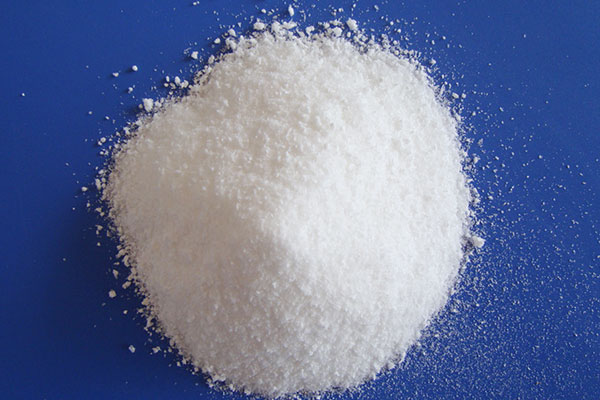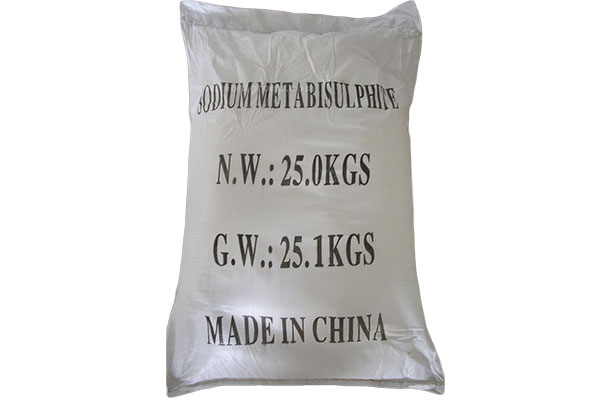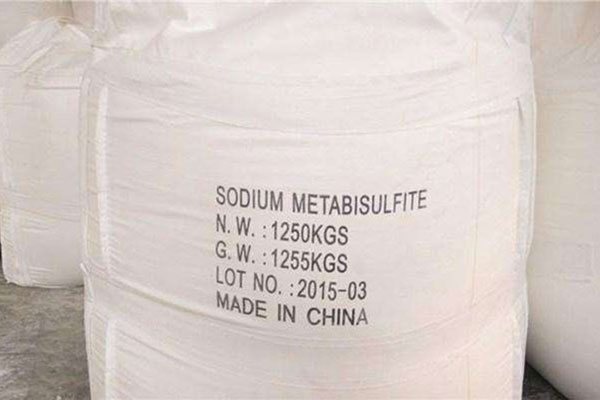Home » Sodium Metabisulphite

Sodium Metabisulphite For Sale in Chemate
- Other names: Sodium Pyrosulfite, Sodium Metabisulfite, SMBS
- Chemical Formula:Na2S2O5
- Cas No.:7681-57-4
- HS Code: 28321010
- Description: Sodium Metabisulphite(SMBS), also know as sodium metabisulfite, sodium pyrosulfite, is an inorganic compound. It i white or slightly yellow crystalline powder in appearance. Sodium Metabisulphite for sale in our company are divided into industrial grade and food grade with different quality indicators. Industrial grade sodium metabisulphite is widely used in various fields. The chemical is an important raw material in the chemical industry. Food grade sodium pyrosulfite not only has the effect of bleaching, but also has the effect of anti-oxidation, the effect of preventing enzymatic browning and the effect of antisepsis. Tell us more about your requirements and contact us to buy sodium metabisulphite for sale in Chemate now.


Technical Specifications of Sodium Metabisulfite
| Item | Specification |
| Na2S2O5 content | 97% min |
| Heavy metals ( as Pb) | 0.0005%max |
| Arsenic ( As) | 0.0001% max |
| Iron (Fe) | 0.0030% max |
| Water insoluble | 0.02% max |
| PH value | 4.0-4.8 |
Would Like The Quotation
Leave more about your requirements, such as, tech grade or food grade, quantity, package, country, etc.
What Are Main Applications of Sodium Metabisulfite
In Industrial Fields
As a disinfectant. Sodium pyrosulfite has good sterilization and disinfection effects, and is widely used in medical, food processing and other fields.
As a bleach. Sodium metabisulfite can be combined with the chromophore in the dye to decolorize it, and it is used for bleaching in textile, paper, leather and other industries.
As a reducing agent. Sodium pyrosulfite can reduce metal ions such as silver and mercury, and is widely used in silver salt photography, electroplating and other fields.
As a medicine. The pharmaceutical industry is used for the purification of chloroform, phenylpropyl sulfone and benzaldehyde. Sodium metabisulfite can be used to treat skin diseases, digestive tract diseases, etc
In the rubber industry, it is used as a coagulant. In the printing and dyeing industry, it is used as a dechlorination agent for cotton cloth after bleaching, as a scouring aid for cotton cloth, and as a mordant for printing and dyeing. In the tanning industry, it is used for leather treatment, which can make the leather soft, plump, tough, waterproof, anti-folding, and wear-resistant. In the chemical industry, it is used to produce hydroxyvanillin, hydroxylamine hydrochloride, etc.
In Food Processing Industry
Bleaching is one of the most widely used applications of sodium metabisulfite
Anti-browning effect. Enzymatic browning often occurs in fruits and potatoes. Sodium pyrosulfite is a reducing agent, which has a strong inhibitory effect on the activity of polyphenol oxidase. In addition, it can consume the oxygen in the food tissue and play the role of deoxidation. Sulfurous acid can also perform an addition reaction with glucose to prevent the glucosamine reaction between glucose and amino acids in food, thus having the effect of preventing browning.
Antiseptic effect. Sulfurous acid can act as an acid preservative. Undissociated sulfurous acid is believed to inhibit yeast, mold, and bacteria.
The role of the loosening agent can be used as a component of the loosening agent.
Antioxidant effect. Sulfurous acid has a significant antioxidant effect. As sulfurous acid is a strong reducing agent, it can consume oxygen in fruit and vegetable tissues and inhibit the activity of oxidase, which is very effective in preventing the oxidative destruction of vitamin C in fruits and vegetables.
Would Like The Quotation
Leave more about your requirements, such as, tech grade or food grade, quantity, package, country, etc.
More About Sodium Pyrosulfite
It has a strong pungent odor, is soluble in water, and its aqueous solution is acidic. When in contact with strong acid, it will release sulfur dioxide and generate corresponding salts.
If left in the air for a long time, it will be oxidized to sodium sulfate, so sodium pyrosulfite can’t be stored for a long time.
Relative density 1.4, soluble in water and glycerin, slightly soluble in ethanol, insoluble in benzene.
The aqueous solution is acidic, and it will form stable sodium bisulfite after being dissolved in water. It is easy to decompose when it is exposed to the air, and it is easy to slowly oxidize and release SO2 when it is exposed to the air. Finally, it absorbs oxygen and is oxidized to Na2SO4.
Contact with strong acid releases SO2 and generates corresponding salts.
When it reacts with caustic soda or soda ash solution, sodium sulfite is formed, and it can form adducts with aldehydes.
Solid sodium metabisulfite begins to decompose when heated to 150℃, and is poisonous if ingested.
The solubility of sodium metabisulfite refers to the maximum mass of sodium metabisulfite that can be dissolved per liter of water at a certain temperature. Solubility is affected by temperature, the higher the temperature, the greater the solubility, and the lower the temperature, the smaller the solubility.
Sodium metabisulfite has a relatively high solubility. For example, at 25°C, the maximum mass of sodium metabisulfite that can be dissolved in water is 35.9g per liter of water. At 100°C, the maximum mass of sodium metabisulfite that can be dissolved in per liter of water is 118g. At 200°C, the maximum mass of sodium metabisulfite that can be dissolved in per liter of water is 327g.
The solubility of sodium metabisulfite is affected by the nature of the water. For example, the higher the pH of water, the greater its solubility. The higher the ionic strength of water, the greater its solubility. The higher the temperature of the water, the greater the solubility.
In addition, the solubility of sodium metabisulfite is also affected by the air pressure, the greater the air pressure, the smaller the solubility. The smaller the pressure, the greater the solubility. For example, at 20°C and under normal pressure, the maximum mass of sodium metabisulfite that can be dissolved in per liter of water is 35.9g. At 20°C, under high pressure, the maximum mass of soluble sodium metabisulfite per liter of water can reach 45.5g.
The solubility of sodium metabisulfite is also affected by the nature of the substance. Adding a certain amount of electrolyte will increase the solubility of sodium metabisulfite. At the same time, adding certain insoluble matter will reduce the solubility of sodium metabisulfite.
In short, the solubility of sodium metabisulfite is affected by various factors such as temperature, water quality, air pressure, and material properties. The parameters should be adjusted reasonably according to the actual situation to obtain a suitable solubility.
As a professional sodium metabisulfite supplier with more than 15 years export experience, Chemate will be your ideal choice. Feel free to inquiry us for the best sodium metabisulphite price now.
- Email: sales@chemategroup.com
- Tel: 0086-371-60921621
- Whatsapp: +86 18624832876
- Wechat: +86 18624832876
- ADD: NO.80 PUHUI ROAD,ZHENGZHOU CITY, HENAN PROVINCE, CHINA
